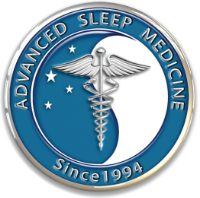In-center Polysomnography (PSG)
 In-center polysomnography (PSG) records your brain waves, heartbeat and breathing as you sleep. It also charts your eye movements, limb movements and oxygen in your blood. PSG is also referred to as a diagnostic study, attended PSG, fully attended overnight sleep study. PSG can diagnose or rule out sleep disorders such as obstructive and central sleep apnea, restless leg syndrome (RLS) and more.
In-center polysomnography (PSG) records your brain waves, heartbeat and breathing as you sleep. It also charts your eye movements, limb movements and oxygen in your blood. PSG is also referred to as a diagnostic study, attended PSG, fully attended overnight sleep study. PSG can diagnose or rule out sleep disorders such as obstructive and central sleep apnea, restless leg syndrome (RLS) and more.
Most common reason for performing this test: Suspected sleep disorder, rule out suspected sleep disorder, rule out a sleep disorder such as sleep apnea before performing MSLT. In children, PSG may be used to diagnose or rule out suspected sleep apnea due to enlarged tonsils or adenoids, an obese child may have OSA due to excess fat around the airway
CPT Code: 95810 or 95782 (children under 6 years)

 HST is a type of diagnostic polysomnography which is self-administered by the patient in his/her home. It is used to diagnose sleep apnea by recording several channels
HST is a type of diagnostic polysomnography which is self-administered by the patient in his/her home. It is used to diagnose sleep apnea by recording several channels
 In-center polysomnography (PSG) records your brain waves, heartbeat and breathing as you sleep. It also charts your eye movements, limb movements and oxygen in your blood.
In-center polysomnography (PSG) records your brain waves, heartbeat and breathing as you sleep. It also charts your eye movements, limb movements and oxygen in your blood. 
 Split night polysomnography is an in-center test that begins with diagnostic polysomnography and switches to PAP therapy titration once the patient shows sufficient apnea events. This test is often ordered when sleep apnea is highly likely and can eliminate the need for a second night sleep study if the titration is successfully completed.
Split night polysomnography is an in-center test that begins with diagnostic polysomnography and switches to PAP therapy titration once the patient shows sufficient apnea events. This test is often ordered when sleep apnea is highly likely and can eliminate the need for a second night sleep study if the titration is successfully completed. A titration study is performed when a patient has been previously diagnosed with sleep apnea (either with an in-center or in-home sleep study) and is used to determine the optimal PAP settings which eliminate all or most apnea events.
A titration study is performed when a patient has been previously diagnosed with sleep apnea (either with an in-center or in-home sleep study) and is used to determine the optimal PAP settings which eliminate all or most apnea events. 


